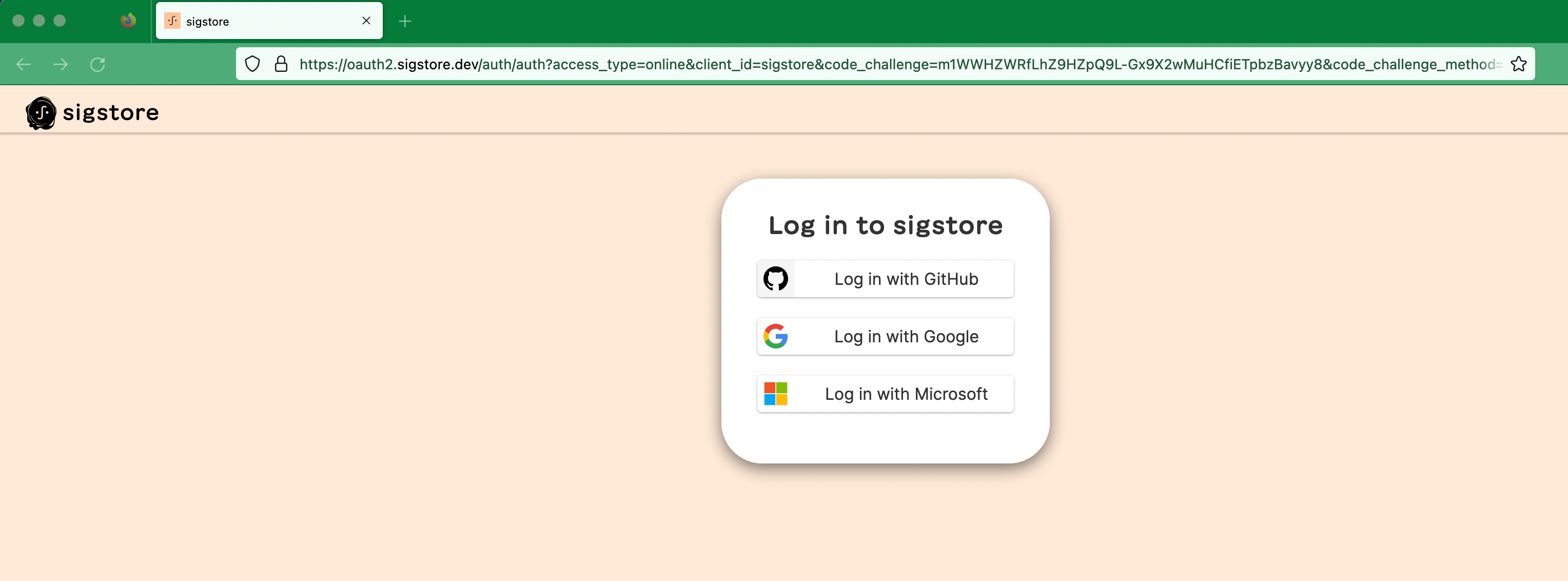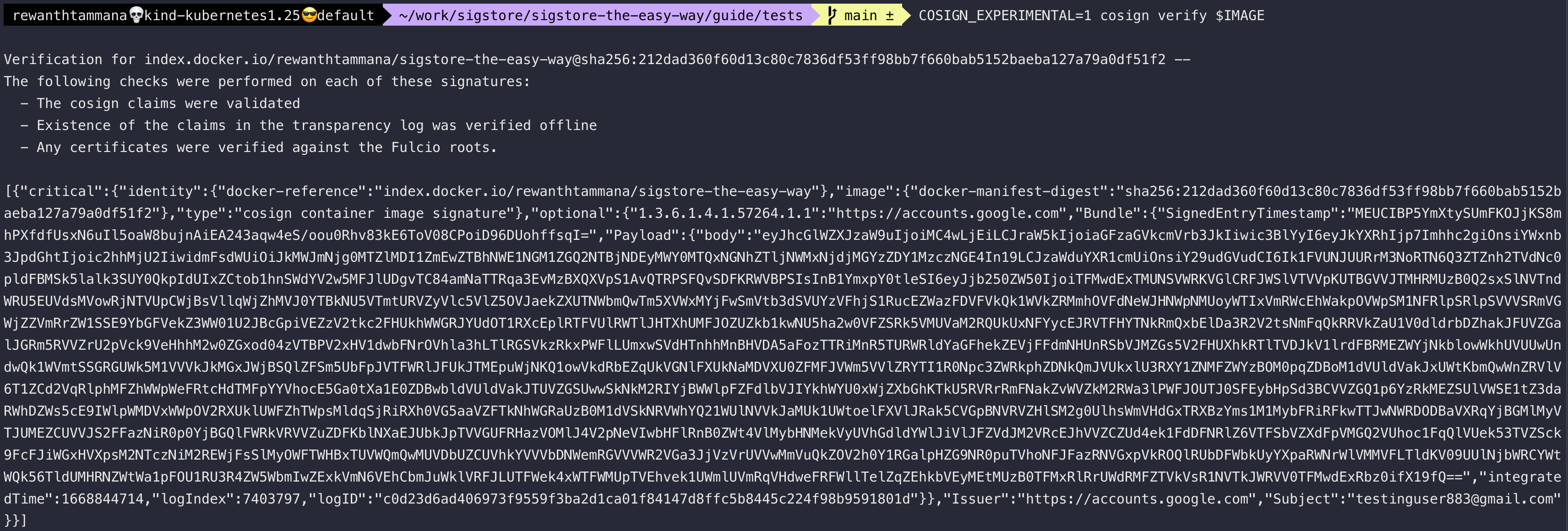Sign and verify without key (keyless signing)
In the previous section, we generated a key pair, it's stored on the file system & used for signing & verification of artifacts. But the keyless signing feature from cosign allows us to sign & verify without having the need to store keys.
Set image
We can follow the steps from this section to set the image. Let's ensure the IMAGE variable is set.
echo $IMAGE

Sign the artifact
Keyless signing redirects to OIDC provider login pages like Google, Github & Microsoft to sign the artifact. We can have our own OIDC configured but to keep things simple, let's skip that.
COSIGN_EXPERIMENTAL=1 cosign sign $IMAGE


In the output, we can see the tlog entry created with index: 7403797. The index differs on every upload. We can visit compare the signatures uploaded to transparency log and registry section to read how to query the transparency log with tlog index for verification & more.
Verify the artifact
COSIGN_EXPERIMENTAL=1 cosign verify $IMAGE

Observe the list of checks performed above in this method,
The following checks were performed on each of these signatures:
- The cosign claims were validated
- Existence of the claims in the transparency log was verified offline
- Any certificates were verified against the Fulcio roots.
As you can see above, with this method of signing, there's the involvement of transparency log and fulcio.
Inspecting the signature
We can parse the output to write custom queries. For instance, the below command helps to extract the issuer & subject information of the signer,
COSIGN_EXPERIMENTAL=1 cosign verify $IMAGE | jq -r '.[].optional| .Issuer + "-" + .Subject'

Created: 2022-11-19 06:59:59